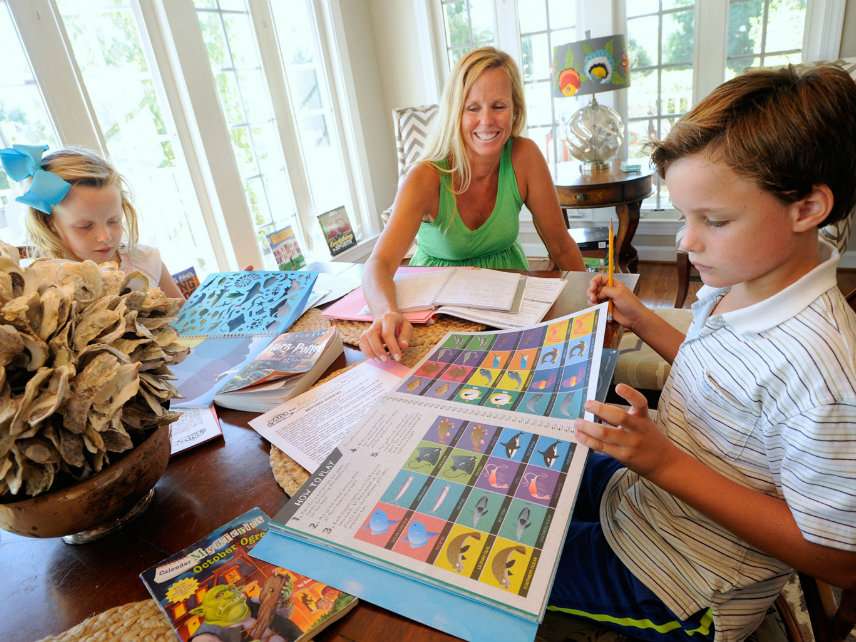Back To School Choice
These days, kids are heading back to increasingly varied learning experiences that might or might not include anything recognizable as a traditional school.

Around much of the country, back-to-school shopping, preparations, and anxiety are in full swing. And—as with so much in life—demand, innovation, and technology are making the "back to school" experience every bit as diverse as a vast nation full of different preferences and needs could hope for. These days, kids are heading back to increasingly varied learning experiences that might or might not include anything recognizable as a traditional school.
"Nearly 1 in 5 North Carolina students is not attending a traditional public school, and that percentage is likely to continue rising as more families choose alternative education options," the Charlotte Observer marveled last month. "For the third year in a row, enrollment has fallen in North Carolina's traditional public schools even as the number of students continues to rise in charter schools, private schools and homeschools."
Here in Arizona, as of 2017, "public charter schools now serve 185,900 students or 17 percent of Arizona's public school students, a 6 percent increase over FY16," according to the Arizona Charter Schools Association. Private schools serve 4.65 percent of the state's students. An unknown number take advantage of the state's non-restrictive—actually, welcoming—environment for homeschooling. Meanwhile, as in North Carolina, traditional district public schools have seen a multi-year decline in enrollment.
Nationally, the number of private school students has held pretty steady at around ten percent of the population, according to the National Center for Education Statistics. But "[b]etween fall 2000 and fall 2015…the percentage of public school students who attended charter schools increased from 1 to 6 percent."
The NCES also reports that "[t]he homeschooling rate increased from 1.7 percent in 1999 to 3.4 percent in 2012." Since then, according to the National Home Education Research Institute, "While the overall school-age population in the United States grew by about 2.0 percent from spring 2012 to spring 2016, data from 16 states from all four major regions of the nation showed that homeschooling grew by an average of about 25 percent in those states."
These options are getting even more interesting and varied as technology expands the range of the possible by connecting students with knowledge across the internet. Online classes long ago progressed beyond canned lectures to incorporate meeting software, real-time interaction, file-sharing, and responsive lessons.
"In 2016-17, 429 full-time virtual schools enrolled 295,518 students, and 296 blended schools enrolled 116,716," the University of Colorado's National Education Policy Center (NEPC) reported in May. "Enrollments in virtual schools increased by 17,000 students between 2015-16 and 2016-17 and enrollments in blended learning schools increased by 80,000 during this same time period."
The "hybrid" option mentioned by the report's authors refers to students who attend some classes online and others in a brick-and-mortar school. But it can also apply to homeschoolers who want to ease their way into a DIY approach, or enhance what they offer their kids.
When my wife and I first pulled our son Anthony from his local school, we enrolled him in an online private school. Three of his friends followed a similar path—two in virtual charter schools, and another in a private offering. Later, we took over the bulk of the teaching ourselves, using materials purchased from a wide array of vendors on the Internet or offered for free by the likes of government agencies, homeschooling enthusiasts, professional associations, and universities. We also used offerings by Internet-only innovations including Khan Academy and TED.
For high school, Anthony has been accepted at a non-traditional, intellectually rigorous, brick-and-mortar private school. But we actively considered three online schools, too—two of them Internet-only, and one a new Web-based offering by an established brick-and-mortar school.
Experts debate the results achieved by these alternatives to traditional public schools. "Virtual schools continued to underperform academically, including in comparison to blended schools," the NEPC noted, "although the margins were much closer this year than last."
"[O]nly a small percentage of these students fared better after enrolling in a charter school," the National Education Association insists of kids who abandon the tender ministrations of its membership at traditional public schools.
Au contraire, argues Ben DeGrow of the Mackinac Center for Public Policy. "Among the states whose charter schools are leading the improvement are those in Michigan… During the same eight-year period, charter school students in Arizona and Georgia have gained a full grade-level or more of learning."
But while union officials and policy experts argue over test scores, parents might take them into account as only one factor when they're deciding on the right school for their kids. The culture of the school, the degree of flexibility vs. structure, and the teaching style are also important factors. Then there's the intellectual rigor. And school priorities don't always match those of parents and kids.
"We're in an extended period where gifted kids are an afterthought at best," education expert Andy Smarick told District Administration magazine in 2014. Official policy pushes public schools to focus on struggling students, while high achievers are left unchallenged and bored. "A 2011 Fordham Institute study found that between 30 and 50 percent of advanced students descend and no longer achieve at the most advanced levels," the article added. (That study can be found online here.)
The school we pulled Anthony from had good test scores, but made him miserable. He was losing his love of learning. We chose options that fit him better, and revived his joy in learning.
There's no real way to quantify a good fit between education and student. All you can do is leave people free to make their own choices.


Show Comments (19)